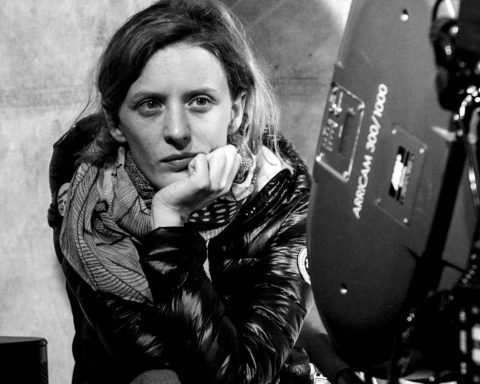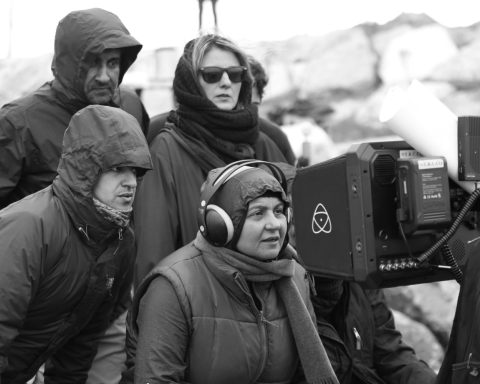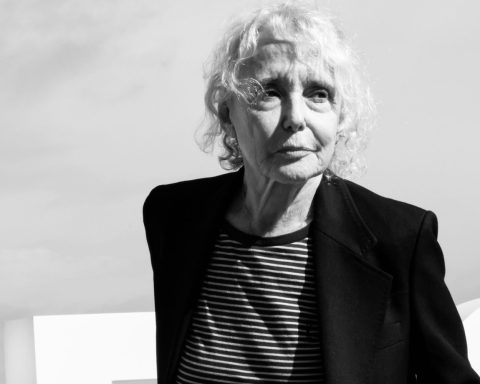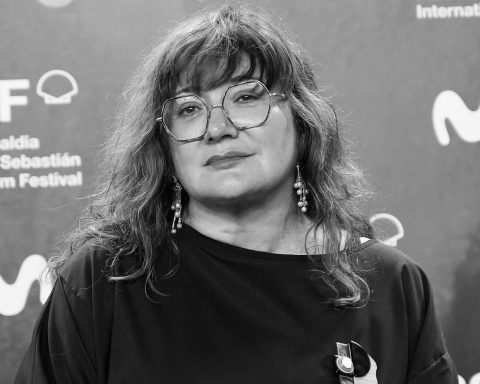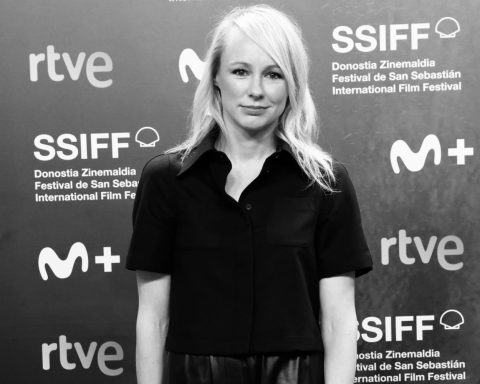Born in Italy and educated in the United States, Cannes Camera d’Or nominated writer–director Cecilia Miniucchi has apprenticed in both the Italian and the American film industries, working with directors Lina Wertmüller – her mentor –, Federico Fellini, the Taviani Brothers, and at Francis Ford Coppola’s Zoetrope Studios. Her previous works include the Sundance and Cannes official selection, “Expired,” the award-winning “Normality,” “Selena Remembered” and “Nitsch 98.” Cecilia Miniucchi has published short stories and poetry, as well as her translations of Samuel Beckett, Native American Poetry, Irish and American contemporary poets. As an artist, she has had several photography and art video exhibitions in Los Angeles, Netherlands, Italy, San Francisco, New York, and Berlin. She studied at Harvard, Oxford, and The American Film Institute. Miniucchi is currently developing several feature films and has started her TV experience with a new series starring John Lithgow and Jack Black.
Tara Karajica talks to Cecilia Miniucchi about her latest film, “Life Upside Down,” starring Bob Odenkirk, Radha Mitchell, and Danny Huston that opened in US theaters and on demand yesterday. “Life Upside Down” is a romantic comedy about time, distance, and the human condition. Three couples, connected by friendship, love and work, are each stuck in their respective homes in Los Angeles during the beginning of lockdown. Finally forced to face their spouses, friends, lovers, and eventually themselves head on, their lives turn slowly but surely upside-down.
What made you want to be a filmmaker?
Cecilia Miniucchi: Gosh, it was a Bergman movie that I saw when I was about eleven years old and was called Prison, a film I was not supposed to see, I think. It was probably for kids who were about fourteen, but t I sneaked in. And yes, I walked in there… As a kid, before, I saw films that my parents would take me to such as Fantasia, Mary Poppins, but they didn’t quite do the trick. But when I saw Bergman, I thought: “This is what I want to do.”
How did Life Upside Down come about?
C.M.: It came about because I wanted to rescue myself and a few others from the boredom and the insanity of the lockdown. So, I thought: “Let’s do something in these weird times.” And so, we started shooting the film at the very beginning of the lockdown when we did not know where this disruption would lead us to.
How did you go about shooting it? In the film, you can see the difference in the camerawork and the sound between the “before world” and the “lockdown world.” Can you talk about that?
C.M.: Of course! At the beginning, we shot the beginning scene and the ending of the film. Those scenes were shot the way I would normally shoot, with a camera that moves all the time. In fact, we shot it all with a Steadicam, and actors moving freely within the set and colors and movement. When the lockdown came about, we were all working remotely and we were all isolated and we had to adapt also technically to the situation, so I came up with the idea of a camera that was still a little below the eye level. And, one of my producers called Berg came up with a the idea of a device that you actually physically built where we put microphones, iPhones, iPads, and we shot from my computers here, where I’m at right now through this device and in their locations in the actors’ homes. My other producer, Jeffrey Colter, came up with how to make this movie video that we gave the actors so that they could be on the same page. That’s how we went about. Every morning, we would give them this device and we would position it for them and all that and then, I would direct them tthrough my computer at home and, sometimes, we had two computers, two locations at the same time. And, eventually, with everybody wanting to be working remotely, maybe that’s how we end up making movies.
I hope not because then the magic will just disappear!
C.M.: Magic… Yes, I guess… But it’s still there.
The film delves into time, distance, human condition, personal introspection as well as relationships between people. Can you elaborate on that?
C.M.: These characters are forced to be locked in and so they’re forced to look at the people they’re with, and think of the ones that they would like to be with. That’s really the theme of the film – the human condition, when there is some sort of disruption, how we are forced to focus on the people that we think we know and that are right next to us, who could sometimes feel further away than they actually are, even if they’re physically next to us. And then, the ones that are physically far away, we feel they’re so close to us because we want to be with them so much, we care for them so much. And, the surprises that come out in these kinds of situations – who are we and who are these people anyway?
What do you think of the rom com today? There has been a bit of down moment for the genre during the past few years, but now it seems to have been experience a renaissance of sorts.
C.M.: Well, you know that I have always made films that walk a very thin line between comedy and drama and because I think that’s what life is about – laughter and tears and and ups and downs, black and white… And so, the films I make are always called romantic comedies, but often they’re dramedies because they do walk that line and I think that nowadays especially, people need some fun as well, something that can bring you up again in hope and laughter.
I couldn’t agree with you more!
C.M.: It’s always great to watch and feel…
Exactly! Can you talk about your female characters – how you wrote them and how you see them?
C.M.: Radha Mitchell’s character is the biggest female character in the movie. She’s a complicated girl that has a very fun side, a very deep side. She’s super intelligent, intellectual. She’s a professor and yet when it comes down to personal issues, she’s not really so together and she lives in this world of fantasy. She thinks this man, that Bob Odenkirk plays, that she’s madly in love with, will be eventually with her without considering the fact that he’s in reality married. The other female character, Danny Houston’s wife – and who happens to be his real wife; her name is Rosie Fellner – first comes across as not so evil. They’re not so highbrow and not so intellectual, but she surprises you with her depth, her needs and her complaints that you would never expect she would be manifesting. So, that’s strong women, and even Bob Odenkirk’s character’s wife that we don’t see as much in the movie lives through this deception, this betrayal. She knows what’s going on and she holds onto the family, no matter what, because she believes that there’s going to be a happy ending to it, which there will be. So, these are three strong women in different ways.
What Is your take on women in film today?
C.M.: We still need more. I’m told I’m the only Italian female director in the States that’s making American films. We need more of those too. That’s not a statement to my cleverness, but it says it’s a sad, sad, sad observation and situation, reflecting again still a small number of female directors, especially not American. And so, I hope that with the obstacles I have had to fight, I have opened a little bit of a pathway for others to follow.
Do you have a favorite female filmmaker? And a favorite film by a female filmmaker?
C.M.: Oh, dear! I would lie if I did not. My great mentor, Lina Wertmüller. She just passed away a year ago. She was here a couple of years ago for her Lifetime Achievement Oscar. And, her seminal work and her teachings and being the first woman to ever be nominated for an Oscar…
What are your next projects?
C.M.: I have a script I’m working on that will, I hope, attract an actress that I really want to work with. And, I’m also doing a non-scripted TV series I already started, with Jack Black, John Lithgow, Kathryn Hahn, Josh Holloway. We have already shot four episodes. So, we’re doing things. We’re moving ahead.
Photo credits: Courtesy of IFC Films.



